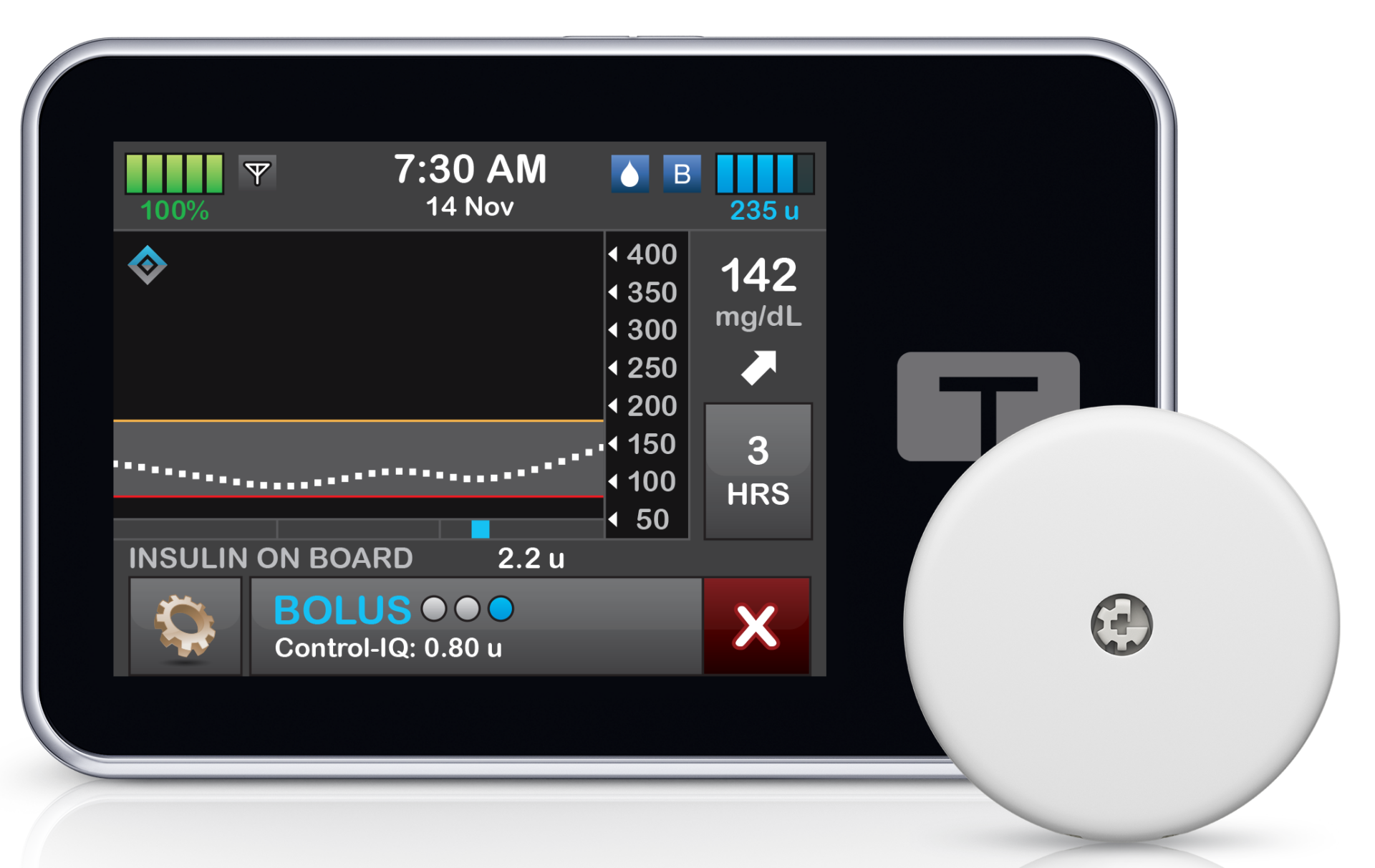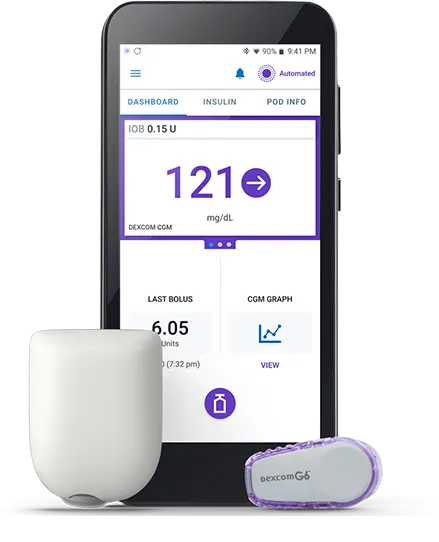June 17, 2024
Comparing the Best Insulin Pumps: Features, Pros, and Cons for Managing Diabetes
What is the Best Insulin Pump for Your Diabetic Needs? Diabetes is a serious condition, and more people than ever are dealing with this disease today. According to the CDC, the number of adults with diabetes has doubled in the…
Share This Story

What is the Best Insulin Pump for Your Diabetic Needs?
Diabetes is a serious condition, and more people than ever are dealing with this disease today. According to the CDC, the number of adults with diabetes has doubled in the past two decades.
Everyone with type 1 diabetes (and more than a few people with type 2 diabetes) needs insulin to manage their condition and live a healthy life. There are several different ways of delivering this medication, including smart insulin pens and syringes. Today, we’ll look at another insulin delivery method – insulin pumps. Keep reading to find out which of these products is most suitable for you.
Written by: US MED Staff
![]() Clinically Reviewed by: Shirley DeLeon, RD, CDCES
Clinically Reviewed by: Shirley DeLeon, RD, CDCES
What is an insulin pump?
A diabetes insulin pump is a small machine worn outside the body that delivers insulin when needed. Traditionally, insulin pumps used a tube and a cannula or a needle to accomplish this goal. These pumps are still available today; however, you can also use “tubeless” pumps that attach directly to your skin.
There are several factors to take into account when considering an insulin pump:
- The largest insulin dose it can deliver (AKA the “bolus”)
- Its overall insulin capacity
- The batteries it uses and how long they last
- Compatibility with continuous glucose monitors
- Unique features
How much does an insulin pump cost?
Along with all this, you’ll need to consider the cost of your insulin pump. If you have Medicare, you’re in luck – Medicare Part B may cover your pump (and the insulin used along with it) as durable medical equipment. If you’re planning to buy a pump out of pocket, you’ll need to do some research to find the most cost-effective option for you.
Insulin pump brands
Before you start the process of deciding which insulin pump is right for you, it’s a good idea to familiarize yourself with the major players in this market. Two of the leading brands in the insulin pump world align with the two main types of insulin pumps available:
Tandem t:slim X2

If you’re interested in a traditional insulin pump, it’s hard to go wrong with the Tandem insulin pump brand known as t:slim X2. With these pumps, you’ll wear a small device outside your body, as insulin pump users have since these devices were first introduced. But that doesn’t mean Tandem is behind the technological curve – the t:slim X2 comes with an easy-to-use color touchscreen, Bluetooth connectivity, and other impressive features.
Insulet OmniPod
Unlike Tandem’s insulin pumps, Insulet offers small tubeless pumps it refers to as “Pods.” A few different products are included in its line of OmniPod pumps, all of which have unique features. However, the brand’s focus on insulin delivery via Pods means these pumps are generally an excellent choice for anyone looking for a tubeless insulin delivery.
These aren’t the only brands on the market – there are also Medtronic insulin pumps, for example and the iLet Bionic Pancreas. However, this should give you an idea of where to start.
What are the types of insulin pumps?
We’ve alluded to the different types of insulin pumps you can choose from, but you may still be wondering what that means. Here’s a quick breakdown:
- Traditional insulin pumps, like the t:slim X2, are small devices you wear outside your body. These pumps are connected to your body with a tube used for insulin delivery.
- Tubeless or wireless insulin pumps, like the various OmniPod devices, are worn directly on the body. As their name suggests, these pumps don’t need tubing to deliver insulin.
- While they aren’t technically a different type of pump, closed-loop systems are also worth discussing here. These combine insulin pumps with continuous glucose monitors, creating a system that can monitor your glucose levels and deliver insulin when you need it.
What is the best insulin pump for your diabetic needs?
In truth, there isn’t a single “best insulin pump” for everyone. After all, every device in this category has its unique pros and cons. It’s also difficult to compare pumps based on cost, since insurance often covers them in whole or in part. As a result, your best bet when shopping for insulin pumps is to look at these products and think about which one would be an ideal fit for you:
Insulin Pump Comparison Chart
| Feature/Aspect | Tandem t:slim X2 | Insulet OmniPod | Insulet OmniPod DASH | Insulet OmniPod 5 |
|---|---|---|---|---|
| Type | Traditional (Tubed) | Tubeless | Tubeless | Tubeless |
| Delivery Method | Tube and Cannula | Pod | Pod | Pod |
| Display | Color touchscreen | PDM with LCD screen | 4-inch color touchscreen PDM | Smartphone app or Omnipod 5 Controller |
| Battery | Rechargeable lithium polymer | Two AAA alkaline batteries | Rechargeable lithium battery | Rechargeable lithium battery |
| Compatibility with CGM | Dexcom G6, G7, Freestyle Libre 2+ | No CGM integration | No CGM integration | Dexcom G6 |
| Memory | 90 days | 90 days | 90 days | Not specified |
| Waterproof | Watertight (3 ft. for 30 mins.) | Waterproof (25 ft. for 1 hr.) | Waterproof (25 ft. for 1 hr.) | Waterproof (25 ft. for 1 hr.) |
| Bolus Calculator | Yes | Yes (via PDM) | Yes (Integrated with PDM) | SmartBolus Calculator (uses CGM data) |
| Activity Mode | No | No | No | Yes |
| Basal Rate Minimum Start | 0.001 units at programmed rates > 0.1 units/hour | 0.05 units | Not specified | Not specified |
| Reservoir Capacity | 300 units | 200 units | 200 units | 200 units |
| Unique Features | Micro-Delivery, Precision Dosing, Closed-Loop System | Tubeless, Simple Design | Touchscreen PDM, Mobile App | SmartAdjust Technology, Closed-Loop System |
| Pros | Precision insulin doses, advanced features | Simple, no tubing, waterproof | Enhanced interface, mobile app integration | Advanced technology, integrated with Dexcom G6 CGM |
| Cons | Uses tubing, not as sleek as tubeless options | Lacks some advanced features, to be phased out | Not fully integrated with latest CGMs | Limited availability, early stages of rollout |
Summary
Tandem t:slim X2: Ideal for those who prefer traditional insulin pumps with advanced features and precision dosing. Compatible with Dexcom CGMs.
Insulet OmniPod: Best for users seeking a simple, tubeless, and waterproof option. It’s a reliable choice but lacks some of the newer features.
Insulet OmniPod DASH: Offers a modern touchscreen PDM and mobile app integration‡, making it a step up from the basic OmniPod but still not the most advanced. Offers up to 3 days* of uninterrupted insulin delivery.
Insulet OmniPod 5: The most advanced option with SmartAdjust technology and Dexcom G6 CGM integration, ideal for those wanting the latest in diabetes management technology. §Like the OmniPod DASH, it can also deliver insulin for up to three days and has tubeless, waterproof‖ pods.
Where can I get an insulin pump?
Whether your insulin pump of choice is a traditional t:slim insulin pump or something in the OmniPod line, your best place to start looking for these devices is US MED. We sell many other diabetes supplies, as well. Along with your next insulin pump, consider picking up a CGM (such as the Dexcom G6 CGM System, which is compatible with the t:slim X2 and OmniPod 5) or additional diabetes testing supplies!
Footnotes:
*1 Pod offers approximately 14 shots
†Only available in English
‡CGM Systems do not have integrated functionality with the Omnipod DASH® System
§Brown S. et al. Diabetes Care. 2021;44:1630-1640. Prospective pivotal trial in 240 participants with T1D aged 6 – 70 yrs. Study included a 14-day standard therapy (ST) phase followed by a 3-month Omnipod 5 hybrid closed-loop (HCL) phase. Mean time in range (70-180mg/dL) in adults/adolescents and children as measured by CGM: ST = 64.7%, 3-mo Omnipod 5 = 73.9%, P<0.0001; ST = 52.5%, 3-mo Omnipod 5 = 68.0%, P<0.0001, respectively. Mean time > 180 mg/dL (12AM-6AM) as in adults/adolescents and children, ST vs. 3-mo Omnipod 5: 32.1% vs. 20.7%; 42.2% vs. 20.7%, P<0.0001, respectively. Mean time >180 mg/dL (6AM -12AM) in adults/adolescents and children, ST vs. 3-mo Omnipod 5: 32.6% vs. 26.1%; 46.4% vs. 33.4%, P<0.0001, respectively. Median time in <70 mg/dL (12AM-6AM) in adults/adolescents and children, ST vs. 3-mo Omnipod 5: 2.07% vs. 0.82%,P<0.0001; 0.78% vs. 0.78%, P=0.0456, respectively. Median time <70 mg/dL (6AM-12AM) in adults/adolescents and children, ST vs. 3-mo Omnipod 5: 1.91% vs. 1.08%, P<0.0001; 1.17% vs. 1.62%, P=0.2545, respectively. Results measured by CGM.
‖The Pod has an IP28 rating for up to 25 feet for 60 minutes. The controller is not waterproof.
¶For a list of compatible smartphone devices visit omnipod.com/compatibility.






